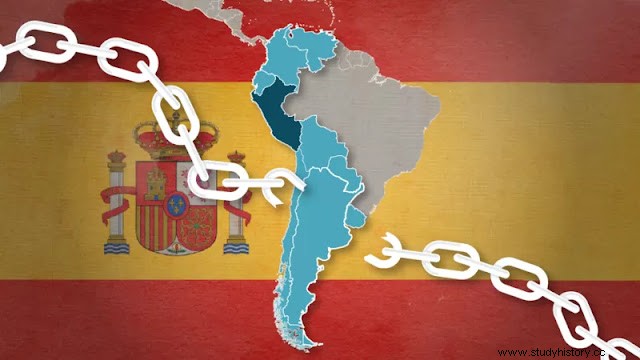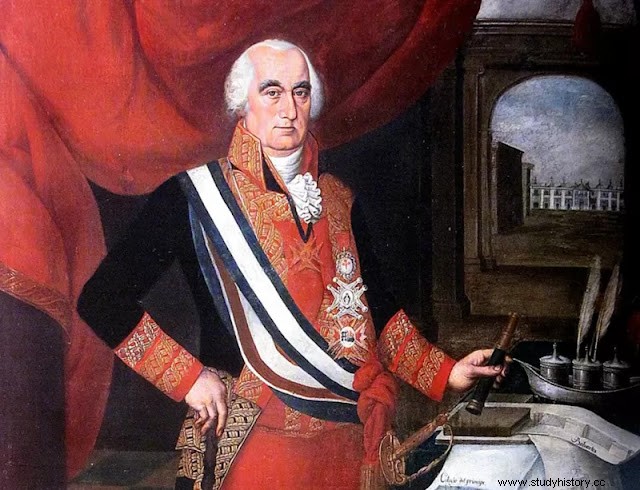
"First Libertarian Cry" The answer to the first question is that, while Peru commemorates 200 years since General José de San Martín proclaimed independence, many of its South American neighbors chose to commemorate the bicentennial not of their emancipation, but of the beginning of the revolutions that they would eventually lead them to be free nations years later. This explains why Bolivia was the first country in the region to celebrate its bicentennial, on May 25, 2009, even though it will celebrate 200 years of independence on August 6, 2025. .
What then President Evo Morales commemorated was the bicentennial of the so-called Revolution of Chuquisaca, which is considered by many to be the "First Libertarian Cry of America" (although some maintain that it was actually in La Paz or Quito where the beginning of independence was marked). The Chuquisaca Revolution was a popular uprising that occurred on May 25, 1809 in the city that is now Sucre and that in colonial times was part of the Vi kingdom of the Río de la Plata. The Creoles deposed the governor and formed a Government Junta, which was suffocated in 1810. This revolution was the initial kick of a series of similar processes throughout Latin America.
What triggered One of these revolutions was the French invasion of Spain in 1808, which led King Carlos IV and his son, Ferdinand VII, to abdicate in favor of Napoleon Bonaparte, who appointed his brother José as the new Spanish king. But in the American colonies, the Creole elites did not recognize José I and took advantage of the power vacuum to create their own governments. Although these first Government Juntas initially swore allegiance to Fernando VII, they eventually broke with the crown, inspired by recent independence of the United States (1776) and Haiti (1804), and in the French Revolution (1789). Thus began a long and complicated wave of independence that would fragment the region, eventually resulting in the nations we know today.
Revolution vs independence It was the bicentennial of these revolutions or "libertarian cries" that was commemorated between 2009 and 2011 by countries such as Bolivia, Venezuela, Argentina, Colombia, Chile and Uruguay, which later held more modest celebrations to mark the 200 years since they actually proclaimed their sovereignty. .But why didn't these countries directly celebrate the date on which they actually achieved their liberation (which in many cases is considered their official "independence day")?
And why do they consider the beginning of of his emancipation the installation of the first Governing Boards when they were still loyal to the Spanish crown?
The Argentine historian Beatriz Bragoni, author of "San Martin:A political biography of the Liberator" (2019), told BBC Mundo that it was not a "fortuitous" decision. "Installing a date or an ephemeris responds to the interests of states in creating their own national narratives and their own national identities," he said. "Strictly speaking, in 1809-11 there was no vocation for independence in relation to Spain," she clarified. However, she stressed that "the commemorations are processes of reconstruction and selective memories that all nations do."

Which was the last one? So what was really the last Spanish colony in South America to become independent?
The answer depends on how you look at it. If we look at which was the last nation to declare itself a sovereign state, the answer is Uruguay. The River Plate country commemorates its independence day every August 25, because it was on that date, in 1825, when an assembly of representatives signed the declaration of independence. However, Uruguay -which was then called the Eastern Province- was not becoming independent of Spain, from which he had already emancipated himself. He was rebelling against the Portuguese crown and the Empire of Brazil, which had invaded him, to join the United Provinces of the Río de la Plata, as the independence territory that supplanted the Viceroyalty was called of the Río de la Plata.
It was only in 1828 that the nation achieved its sovereignty, after mediation by England between Brazil and the United Provinces (made up mainly of what is now Argentina). Two years later, with the signing of the Constitution, adopted the name of Eastern State of Uruguay, after the river that defines part of its territory.
The last one: Which was then the last to emancipate from Spain?
Well, Peru was the last to give its "libertarian cry" since Lima, being the center of royalist power in South America, was the one that most resisted the liberating revolution." The Viceroy of Peru, José Fernando de Abascal, played a crucial role in defending the interests of the king and the monarchy through an emphatic policy of extermination of what he called insurgents or American revolutionaries," says Bragoni. With the fall of Napoleon in Europe and the reestablishment of Ferdinand VII in Spain , in 1814, the Spaniards gave battle against the American separatist movements, and the capital of the Viceroyalty of Peru played a key role. at the same time, its merchants, its elites, financed the war in South America", details the historian.
It was thus that, just after making his famous crossing of the Andes and liberating Chile, in 1818, the he Argentine ibertador San Martín arrived with his army in Lima, and declared the independence of Peru on July 28, 1821. However, this was not, strictly speaking, the last South American country to free itself from the Spanish crown. As we have already mentioned, Bolivia declared itself an independent state only in 1825, four years after Peru. It turns out that the place that gave the first libertarian cry ended up being the last to achieve its independence. The then called Alto Perú was an autonomous region that had first been dependent on the Viceroyalty of Peru and then on the Viceroyalty of the Río de la Plata, but, when When the revolution broke out in Buenos Aires in 1810, Viceroy Abascal provisionally reincorporated it into the territory under his command. He would take 15 years -and a long guerrilla war- to liberate the entire upper Peruvian territory from Spanish rule and be able to found a new homeland. The last South American nation to become independent from Spain was baptized the Republic of Bolívar, in honor of the Venezuelan liberator Simón Bolívar, but in October 1825 it received its current name of the Republic of Bolivia.
